A Tenmoku teacup has a unique beauty that sets it apart from other porcelain ware. Its true beauty lies in its simplicity, elegance, and naturalness. The deep glaze color of the Tenmoku teacup presents a brilliant and starry-like beauty, which is both mysterious and serene.
Regardless of the type of collection, aesthetic and artistic sense are the primary factors. However, when it comes to "beauty," everyone has their own emphasis, which can be said to be different strokes for different folks. At this point, the connotation of the object is often overlooked. Connotation is rooted in history, and Tenmoku, obviously, is a category that combines beauty and reputation. This is why more and more people choose to collect and use Tenmoku.
Due to the special nature of Tenmoku's materials and craftsmanship, its finished product rate is extremely low. Craftsmen who make truly pure and natural Tenmoku will periodically encounter significant defects that cannot be avoided, which means they cannot produce finished products. Therefore, if you have a connection with Tenmoku, you are also connected with its imperfections. Please give it tolerance and understanding, and it will bring you purity and nature. Today, let's talk about the most concerned aspect of Tenmoku - the pinholes!
The Formation of Pinholes in Tenmoku
The pinholes in Tenmoku are caused by the precipitation of iron in the embryo at high temperatures. The addition of oil and firewood to the kiln produces carbon monoxide, which causes the precipitated iron to transform into small spots. These small spots gradually merge together and eventually form large spots.
Pinholes are caused by the precipitated iron, and it can be said that they are produced when the skin of the pottery "breathes". It is difficult to avoid them completely.
Pinholes are not defects but rather a result of the production process, which makes it inevitable for Tenmoku to have pinholes in the finished product. The main material used for the Tenmoku's body is clay with a high iron content, so even with the craftsmanship from the past until now, it is impossible to completely eliminate pinholes. However, please do not worry, the only thing that craftsmen can do is to reduce the number and size of the pinholes.
Do all porcelain ware have pinholes?
When designing ceramic formulas, more flux materials are added according to usage requirements, and the materials used in the formula generate less gas during firing. This results in fewer voids produced after firing and enough glass phase material to fill in the gaps, resulting in fewer pinholes in the finished product. Ceramics with a water absorption rate of less than 0.5% are called porcelain.
Tenmoku is different from celadon and white porcelain in that it does not contain as much flux material. Therefore, the glaze surface of Tenmoku is not as smooth as celadon or white porcelain and may have some small pinholes. The main material used for the Tenmoku's body is clay with a high iron content, not kaolin used in other porcelain wares. Even if the glaze is well vitrified, it is impossible to completely eliminate pinholes, and this has been the case for craftsmen from ancient times to the present.
The Function of Pinholes in Tenmoku

Speaking of the function of pinholes, we need to talk about the benefits of Tenmoku. The benefits of Tenmoku are described as follows: "Tenmoku's body contains many small pinholes, which are very conducive to keeping the tea soup warm and softening the water quality, as well as stimulating the tea aroma."
As for softening water quality, there are currently several different theories, but personally, I think the most reliable one is that the characteristic of the pinhole rate in the glaze of Tenmoku determines its function of improving water quality.
Pinholes can adsorb calcium and magnesium particles, reduce water hardness, and make it soft and mellow. Moreover, Tenmoku has a good preservation effect and can effectively prevent deterioration.
We should be tolerant of the pinholes in Tenmoku.
It can be said that all finished Tenmoku products will have small pinholes on the glaze surface when viewed up close or under a magnifying glass. Many Tenmoku enthusiasts have questioned whether these small holes are considered defects or not. In fact, as we mentioned earlier, the production process of Tenmoku determines that these small pinholes will appear in the finished product.
The Tenmoku's body uses clay with a high iron content, not kaolin used in other porcelain wares. Even the most skilled craftsmen throughout history cannot completely eliminate the small holes that appear on the surface, even if the vitrification is well done. However, they can make these pinholes as small and as few as possible. Therefore, these small holes in Tenmoku are a normal phenomenon and do not affect its beauty or normal use. We should be tolerant of them.
A tasteful tea room, a rare and exquisite tea, a beloved Tenmoku, and a leisurely moment to brew a pot of tea as you please. The tea is poured into the Tenmoku, and as you lift it to your nose, you can smell the fragrance. The weight of the Tenmoku in your hand perfectly matches the exquisiteness of the cup and the aroma of the tea. As you take a sip of the tea, the pattern on the Tenmoku appears, and as the taste lingers in your mouth, the beauty of the pattern on the Tenmoku catches your eye. The combination of the two is a true indulgence, the essence of life. You feel content and satisfied, and the pleasure is incomparable.


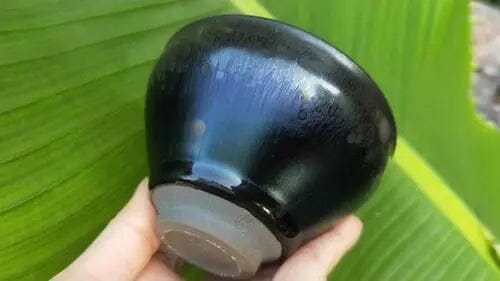
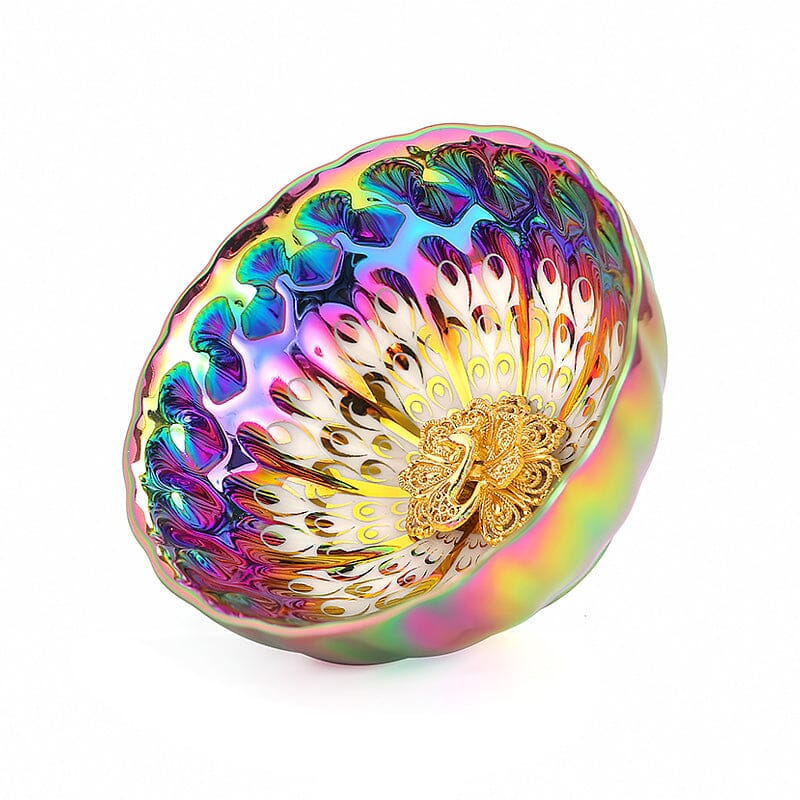
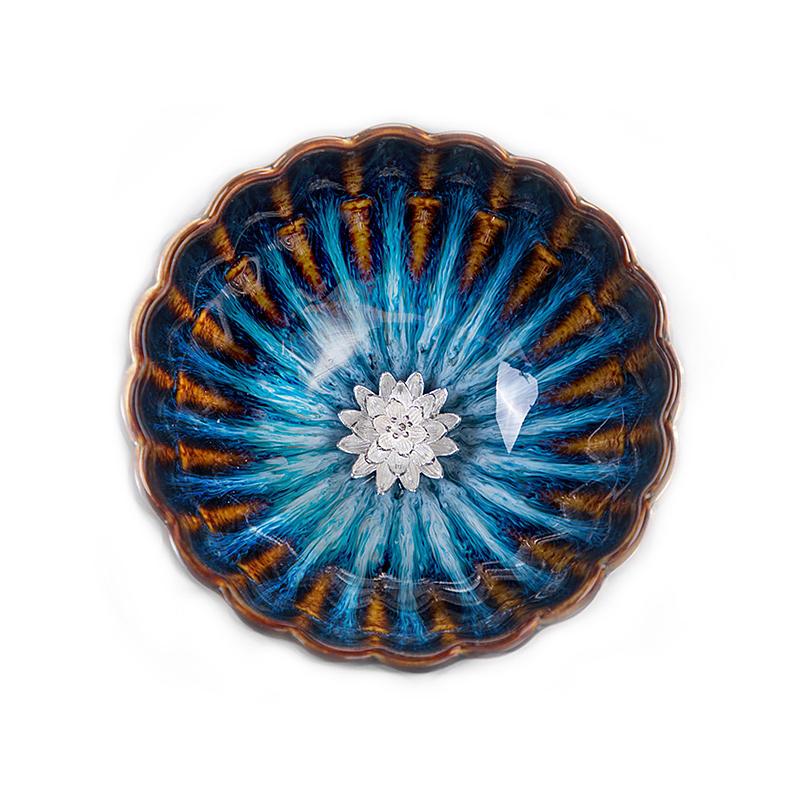
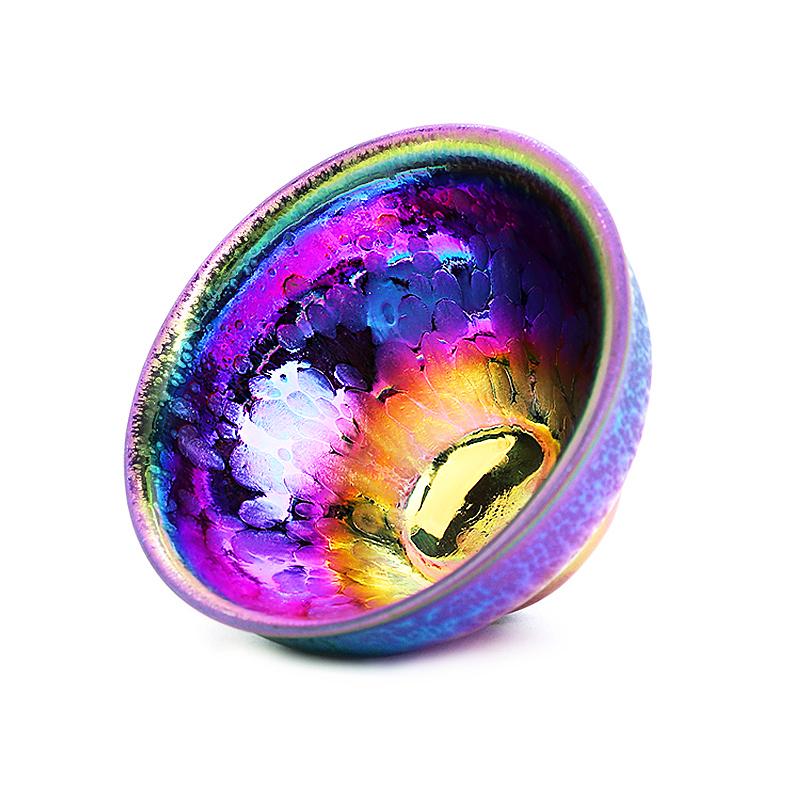
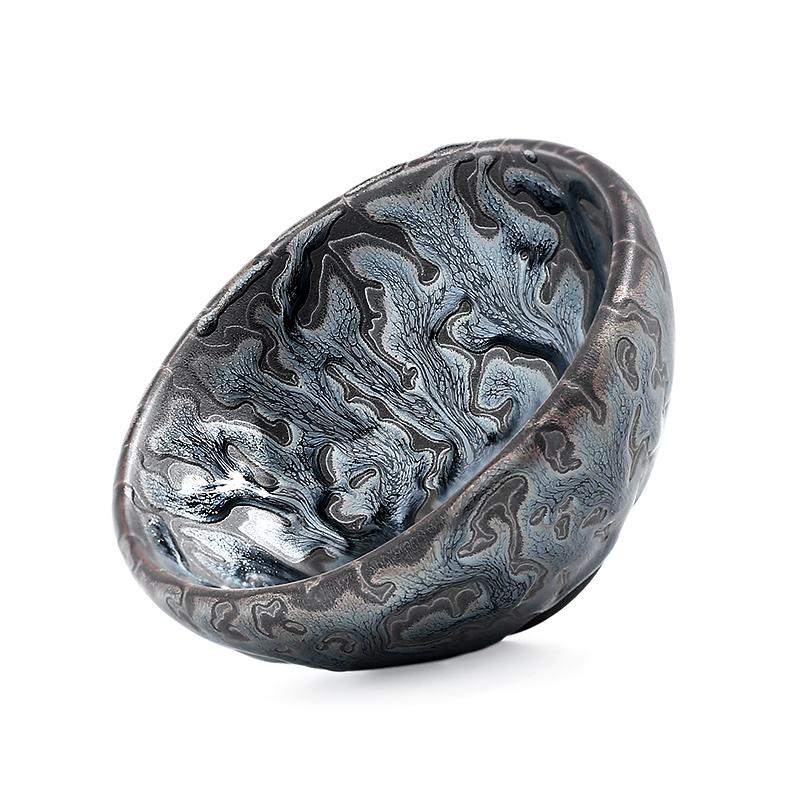


Share:
Why are these "defective" Tenmoku teacups so hard to come by?
Should we tolerate tea stains in order to cultivate colorful Tenmoku glaze